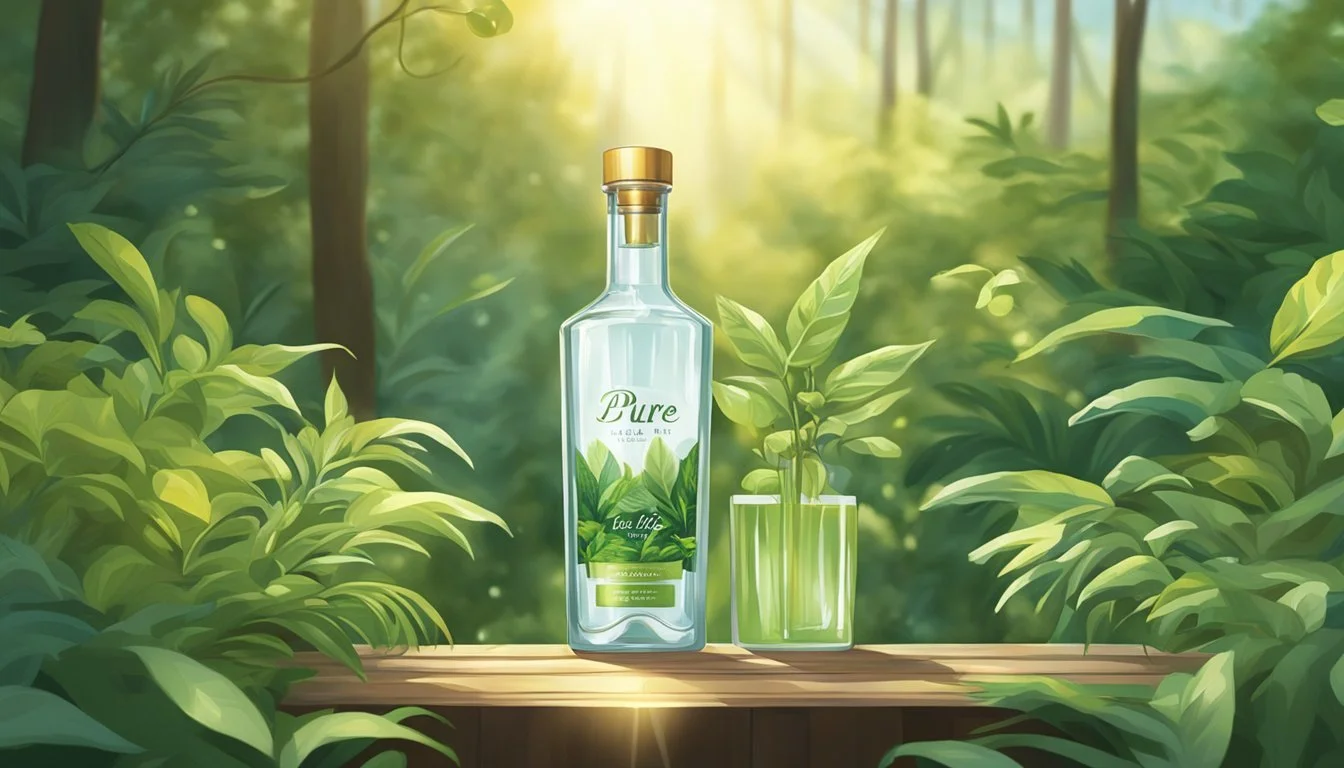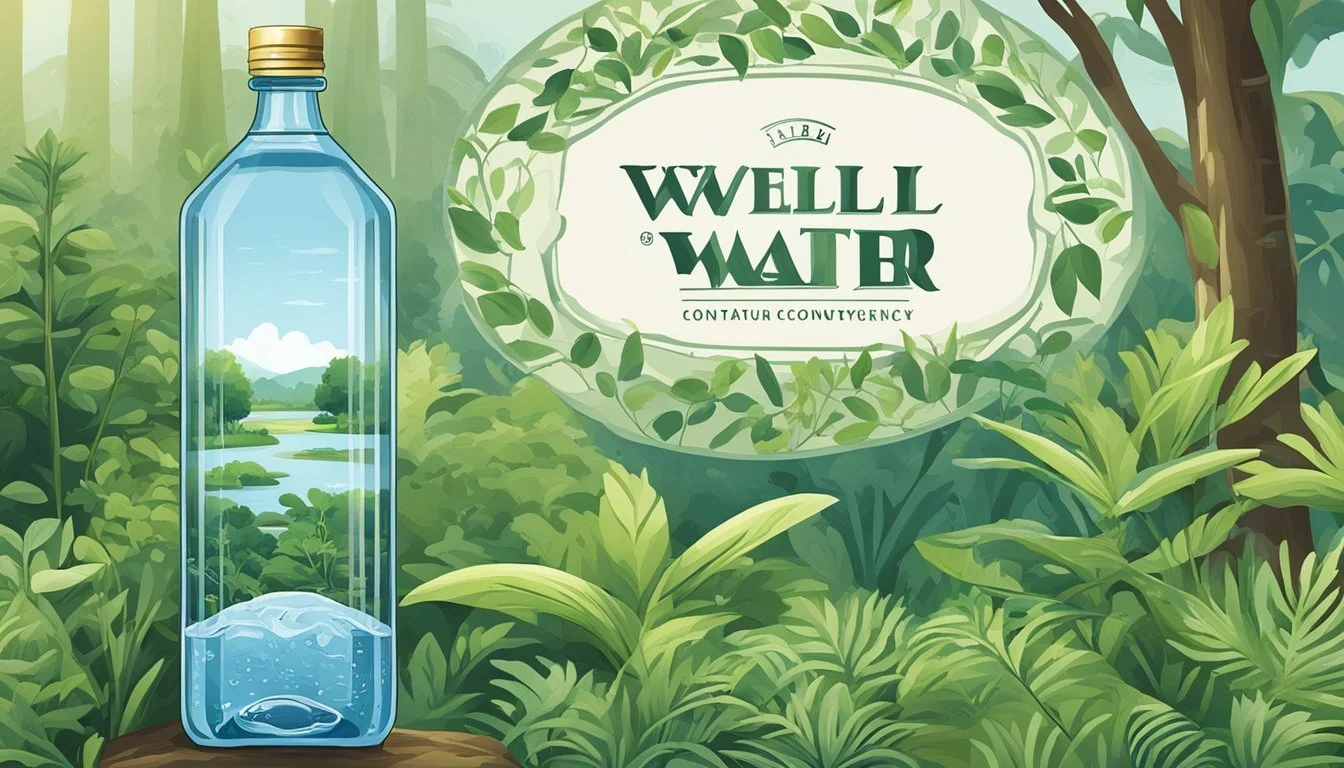The Well vs. Pure Life
A Comprehensive Bottled Water Comparison
Choosing the right bottled water can often be a daunting task, especially when faced with brands like The Well and Pure Life. Both claim to offer high-quality hydration, yet their sources and processes differ significantly. The Well is often praised for its crisp taste and clean sourcing from natural springs, making it a premium option for those seeking top-tier bottled water.
In contrast, Pure Life, often sourced from city water supplies, has faced criticism for its taste and quality. Reviews often mention a hint of plastic and minerals, which detracts from its appeal. While it is more affordable, it may not meet the standards of more discerning consumers.
When deciding between The Well and Pure Life, it’s essential to consider what you value most in your bottled water. If you prioritize purity and taste, The Well is likely the better choice. On the other hand, if cost and availability are your primary concerns, Pure Life might still serve your needs adequately.
Understanding Bottled Water
Bottled water comes in various types and offers diverse health benefits. It’s essential to understand the differences, the quality standards, and how it compares to tap water.
Types of Bottled Water
Natural Spring Water: Sourced from natural springs, it contains minerals present at the source.
Purified Water: Undergoes processes like distillation, deionization, or reverse osmosis to remove impurities.
Mineral Water: Contains a consistent level of minerals and electrolytes such as calcium, magnesium, and potassium that occur naturally and are not added later.
Alkaline Water: Known for its higher pH levels than regular water, it is said to help neutralize the acid in the body's bloodstream.
Sparkling Water: Carbonated naturally or artificially, providing a fizzy texture.
Labels and FDA Regulations
The FDA sets stringent regulations for bottled water to ensure safety and quality. Labels must include the type of water, origin, and if any minerals have been added.
Bottled water manufacturers must adhere to Good Manufacturing Practices (GMP), ensuring the water is free from contaminants. Additionally, labels often provide information on total dissolved solids (TDS) and pH levels, ensuring transparency for consumers.
Bottled Water Vs. Tap Water
Tap Water: Regulated by the EPA, it provides a cost-effective hydration option but can contain contaminants based on local water quality.
Bottled Water: Offers convenience and often higher quality standards, providing safe hydration with consistent taste and mineral content.
Bottled water can be more reliable in areas with poor tap water quality. However, it's more expensive and has environmental impacts due to plastic waste.
By weighing the benefits and regulations, consumers can make informed choices on hydration sources.
Source and Purity
When comparing The Well and Pure Life bottled waters, it's crucial to consider where their waters come from and the extensive processes they undergo to ensure purity and safety. Understanding these aspects provides insight into their overall quality and health standards.
Bottled Water Sources
The Well sources its water from natural springs. Natural spring water originates from groundwater that naturally flows to the surface, often from protected underground aquifers. These sources are carefully chosen to maintain high standards of freshness and mineral balance.
Pure Life, on the other hand, utilizes a mix of sources. These include public water supplies that are subjected to rigorous purification processes such as reverse osmosis or distillation to ensure safety and consistency. This method allows them to offer bottled water at a reasonable cost, making it accessible but requiring meticulous filtration to remove impurities.
Contaminants and Purity Tests
Ensuring water purity involves multiple layers of filtration and rigorous testing for contaminants such as lead, arsenic, PFAS chemicals, and heavy metals. The Well emphasizes maintaining the natural purity of its spring water through minimal processing, ensuring that beneficial minerals remain while removing any harmful substances through microfiltration and carbon filtration.
Pure Life undergoes extensive purification processes including reverse osmosis, distillation, and carbon filtration. These processes aim to eliminate a broad range of contaminants, including potential residues from public water sources. Routine contaminant testing ensures compliance with safety standards, guaranteeing that both the physical and chemical properties meet health guidelines before it reaches consumers.
Health Implications
Health implications of bottled water often center on the presence of beneficial minerals and the safety concerns related to potential contaminants. This impacts both hydration and overall well-being.
Minerals and Health Benefits
The Well contains added minerals such as calcium, magnesium, and potassium. These minerals can enhance the taste and provide health benefits. Calcium is essential for bone health, while magnesium supports muscle function and potassium aids in proper cellular activity.
Pure Life also includes minerals, but it is often perceived as having a more neutral taste due to a balanced mix of added minerals. The presence of electrolytes in both brands can assist in better hydration, although the effect varies among individuals. Silica and antioxidants in some bottled waters contribute to their purported health benefits.
Safety Concerns
Concerns about bottled water safety often revolve around the type of plastic used and potential contaminants. Both The Well and Pure Life use plastic bottles typically labeled as PET (polyethylene terephthalate). PET is generally considered safe but can release phthalates, which may act as endocrine disruptors.
Tests have detected higher levels of microplastics in bottled water compared to tap water. Contaminants such as lead, arsenic, and PFAS chemicals (per- and polyfluoroalkyl substances) pose significant health risks if present. Despite BPA (bisphenol-A) being absent in these bottles, other harmful chemicals might still be present in trace amounts. Continuous monitoring and transparent reporting of water quality are crucial to ensure consumer safety.
Branding and Market Presence
Both The Well and Nestlé Pure Life have carved out unique positions in the bottled water market, leveraging distinct branding strategies and cultivating consumer trust through transparency and quality.
Water Brand Analysis
Nestlé Pure Life benefits from the global reach of Nestlé Waters, one of the largest bottled water companies worldwide. This brand positions itself as reliable and high-quality, undergoing an extensive distillation process to ensure purity. Its worldwide presence and range of offerings appeal to various customer segments.
The Well, although less globally recognized, focuses on a niche market with commitments to sustainability and local sourcing. This appeal to eco-conscious consumers sets it apart from larger competitors. While The Well may not have the same market penetration as Nestlé Pure Life, it has built a loyal customer base through targeted branding efforts.
Consumer Trust and Brand Loyalty
Nestlé Pure Life emphasizes its strict quality control and extensive production processes. The brand's transparency about its filtration and purification methods aims to build consumer trust. Despite occasional concerns about sourcing, Nestlé Pure Life retains significant loyalty, partially due to its consistent presence on store shelves and familiarity.
The Well leverages its sustainable practices to build a deep sense of trust among environmentally conscious consumers. By highlighting local sourcing and eco-friendly packaging, The Well fosters a loyal customer base that values these principles. This approach, though limiting broad market appeal, reinforces strong brand loyalty among its target demographics.
Environmental and Ethical Considerations
The environmental impact and ethical sourcing practices of bottled water brands are critical factors that affect consumer decisions. Nestlé's Pure Life and The Well differ significantly in their approaches to sustainability and corporate responsibility.
The Impact of Bottled Water Production
Plastic water bottles contribute significantly to environmental degradation. The production and disposal processes are energy-intensive, leading to higher carbon footprints. Nestlé Pure Life has faced criticism for its extensive use of plastic bottles, which, if not recycled properly, add to plastic pollution. In contrast, The Well focuses on sustainable packaging and promotes the use of biodegradable materials.
Furthermore, water extraction from natural sources can deplete local water supplies, affecting ecosystems and communities. Nestlé has been accused of over-extracting water from natural sources in various states, leading to environmental concerns. The Well, on the other hand, often sources its water responsibly, ensuring minimal disruption to local environments.
Ethical Sourcing and Corporate Responsibility
Ethical sourcing is another important consideration for consumers. Nestlé Pure Life discloses detailed information about its water sources and treatment methods on its labels. This transparency allows consumers to make informed choices. They also offer contact options for consumers to request water quality reports, showcasing a commitment to transparency.
The Well is known for its ethical practices, prioritizing local communities in its sourcing strategies. It engages in fair trade practices, ensuring that local suppliers are fairly compensated. The Well also actively invests in community development and sustainable water projects, enhancing its corporate social responsibility profile.
Both brands’ approaches to ethical sourcing and corporate responsibility differ, allowing consumers to choose products that align with their values on environmental and ethical grounds.
Comparing The Well and Pure Life
The Well and Pure Life offer distinct experiences in bottled water, differentiated by their source, filtration processes, and impact on health and sustainability. This comparison will highlight their key attributes in these areas.
Quality and Taste Comparison
The Well is often praised for its clean, crisp taste attributed to its natural spring source. It undergoes minimal processing to preserve its natural mineral content, adding to its refreshing flavor.
Pure Life, sourced from city water supplies and well water, follows a rigorous filtration process to remove impurities. Despite this, consumers often report a metallic or plasticky taste, potentially due to its packaging.
Attribute The Well Pure Life Source Natural spring City water and well water Taste Clean and crisp Metallic, plasticky Mineral Content High Varies
Health and Hydration Effectiveness
The Well boasts a high mineral content, which can offer additional health benefits and enhance hydration. Minerals such as calcium and magnesium play crucial roles in bodily functions.
Pure Life focuses on providing safe drinking water through extensive purification. While it may lack the natural minerals found in The Well, it ensures water free from contaminants, suitable for daily hydration needs.
Both brands are widely available, catering to different preferences regarding mineral content and purification process.
Environmental Impact and Sustainability
The Well emphasizes sustainable practices. It often uses eco-friendly packaging and sources water responsibly, minimizing its footprint.
Pure Life, as part of a large corporation, is working towards improving sustainability. However, the reliance on plastic bottles and the large scale of operations raise concerns about environmental impact.
Consumers looking to reduce their environmental footprint may prefer The Well for its sustainable practices, although Pure Life is making strides in this area.
Attribute The Well Pure Life Packaging Eco-friendly options Predominantly plastic bottles Sustainability High emphasis on responsibility Improving, but plastic-heavy
Overall, the choice between The Well and Pure Life depends on individual priorities, whether it's taste, health benefits, or environmental responsibility. Both brands offer unique qualities that cater to diverse consumer preferences.
More About The Well
Cascade Mountain vs The Well: Which Bottled Water is Better?
Hawaiian Springs vs The Well: Which Bottled Water is Better?
Icelandic Glacial vs The Well: Which Bottled Water is Better?
Mountain Valley Spring Water vs The Well: Which Bottled Water is Better?
Nestle Pure Life vs The Well: Which Bottled Water is Better?
Richard's Rainwater vs The Well: Which Bottled Water is Better?
The Well vs Kirkland Signature: Which Bottled Water is Better?
The Well vs Talking Rain AQA: Which Bottled Water is Better?
Whole Foods Italian Still Mineral water vs The Well: Which Bottled Water is Better?
More About Pure Life
Cascade Mountain vs Pure Life: Which Bottled Water is Better?
Hawaii Volcanic vs Pure Life: Which Bottled Water is Better?
Hawaiian Springs vs Pure Life: Which Bottled Water is Better?
Icelandic Glacial vs Pure Life: Which Bottled Water is Better?
Nestle Pure Life vs Pure Life: Which Bottled Water is Better?
Pure Life vs Kirkland Signature: Which Bottled Water is Better?
Pure Life vs Whole Foods 365: Which Bottled Water is Better?
Richard's Rainwater vs Pure Life: Which Bottled Water is Better?
Solan de Cabras vs Pure Life: Which Bottled Water is Better?
Talking Rain AQA vs Pure Life: Which Bottled Water is Better?
Whole Foods Italian Still Mineral water vs Pure Life: Which Bottled Water is Better?





